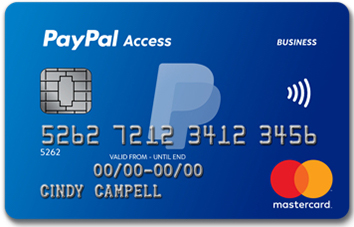As a small business owner, you have a lot of responsibilities. That’s why it’s so important to pay yourself appropriately for all the hard and incredible works you have done.
There are different tax implications for different ways you can pay yourself? Let’s take a closer look at salaries, dividends, loans, and the owner’s draws to see what your options are when it is time to run payroll for yourself.
However, the most important thing before thinking about your earning is that your business entity matters.
You can structure your business as a Sole Proprietorship, Partnership, Cooperative, LLC, S Corporation, or C Corporation.
How each entity works:
Sole proprietorship
The sole proprietorship is the most basic type of business entity. All the assets and liabilities belong to the business owner. Because of this, the business is not taxed separately. Instead, the business’s income is the owner income, and the owner usually reports it with a Schedule C and the standard Form 1040. Also, the owner will need to make estimated tax payments quarterly if the owner expects to make a profit.
Partnership
If the owner is in a business with one or more partners, it could consider a partnership. A partnership does not pay income tax at the partnership level; instead, the profits pass through to the partners. A partnership files Form 1065, and Schedule K-1 for the respective partners.
Limited Liability Corporation (LLC)
A Limited Liability Corporation (LLC) is a lightweight alternative to incorporate your business. It combines the tax pass-through of a partnership and the limitations in liabilities of a corporation. An LLC may not be taxed as a business entity. Rather, the profits may be passed through to the LLC’s members and they are taxed as personal income.
Note that an LLC is a business structure that is covered by state rules. For federal tax purposes, an LLC can be treated as a corporation, partnership, or part of the LLC’s owner’s tax return. The owner should check with your state, or a tax advisor to make sure you understand how the rules apply.
Cooperative
A Cooperative is similar to an LLC in terms of that it is also a corporation and may not pay federal taxes. Rather, profits can be passed through to the cooperative’s members. A Cooperative is different from any other business entity because of its specific rules for membership and operations. Typically, a Cooperative’s members must agree on matters of its laws/rules and operations in a democratic fashion.
S Corporation (S Corp)
If the owner is looking to incorporate the business and has it taxed separately, an S Corporation can be another option for the owner (although the owner can also set it up as a pass-through entity, like a partnership). If an S Corp is taxed as its own entity, the business owner and the employees may see tax savings since they may only be taxed on their wages. An LLC has an option to file as an S Corp for tax purposes. It’s worth noting that not all states recognize the S Corp distinction from a C Corp.
C Corporation (C Corp)
The last business entity option is the C Corp. C Corps are less popular amongst small businesses because they are more complicated than the other options and typically have costly administrative fees. One of the major drawbacks of the C Corp is the “Double Taxation.” The C Corp is taxed twice–once when it makes a profit and again when it distributes dividends to its stockholders. However, for many fast-growing startups, the C Corp is popular because it can offer stock in exchange for an ownership stake.
After knowing the fact above in the different business entities, the owner can consider in different ways that the owner can pay oneself. It depends on the business entity.Many business owners choose to become W-2 employees. The W-2 is issued if the employee (aka you as the owner) earns $600 or more in wages or equivalent. The W-2 employees are subject to withhold taxes, which are taken out each pay period. The withholding tax is a pay-as-you-go tax to the IRS and it can be calculated by using allowances on the W-4 and the IRS withholding calculator.
These three factors will determine how much should be withheld from your pay.

: Marital status
The number of allowances claimed on the W-4 Compensation (Note: This may depend on the state where you are paid.)
Employees who anticipate a full refund may be exempt from withholding. This is different from employees who are exempt; for example, clergy or certain visa holders. The functionality of having your taxes withheld is one reason why some owners choose to be W-2 employees.
The inverse is also true though. Some business owners who want to pay taxes separately may opt out of W-2 wages. The IRS may check on the business owner who does not pay themselves a “reasonable compensation” to avoid paying withholding taxes.
: Dividend
The business owner can also receive dividends. The dividends are not taxed if it is a return of capital to the shareholder. Most dividends are paid out in cash, but you can also have a dividend of stock or other assets.
: Shareholder Loan
Some owners may choose to loan themselves money through their business. A shareholder loan must have a stated interest rate, a maturity date, and covenants for non-repayment. There is some risk though. If the loan is below-market, it will be treated as a gift, dividend, contribution to capital, payment of wages, or other payments. It depends on the substance of the transaction.
: Owner’s draw
Finally, a business owner can choose to do an owner’s draw. Unlike W-2 wages, a draw is not taxed at the company level. If the owner is a sole proprietor or a partner in a partnership, his/her income is a draw. However, it’s also possible to do an owner’s draw as an LLC or even an S-Corp.
There are confusion and complication issues with an owner’s draw. Since draws are not taxed, is there a draw amount that is appropriate for a business owner?
Carin Weiss-Krolikowski of Kahuna Business Group said, “I think the most important thing for any owner of a small business is to have a good bookkeeper and a trusted tax advisor. When paying oneself as a small business owner, many owners think they only have the option for owner’s draw. Of course, this is a viable option. However, if a company is formed as an S Corporation, they can pay themselves as a W-2 employee. The same fact is with an LLC if they claim to file taxes as an S Corporation. There is also the option of Guaranteed Payments (as an LLC) where an owner can pay oneself a salary (no taxes withheld) and take the expense as a line item reducing the company’s annual tax liability. Again, I would urge any business owner to always consult a tax professional.”
However, you choose to pay yourself, make sure you’re following all the laws and paying yourself a reasonable amount. Your business (and accountant) will appreciate you.







